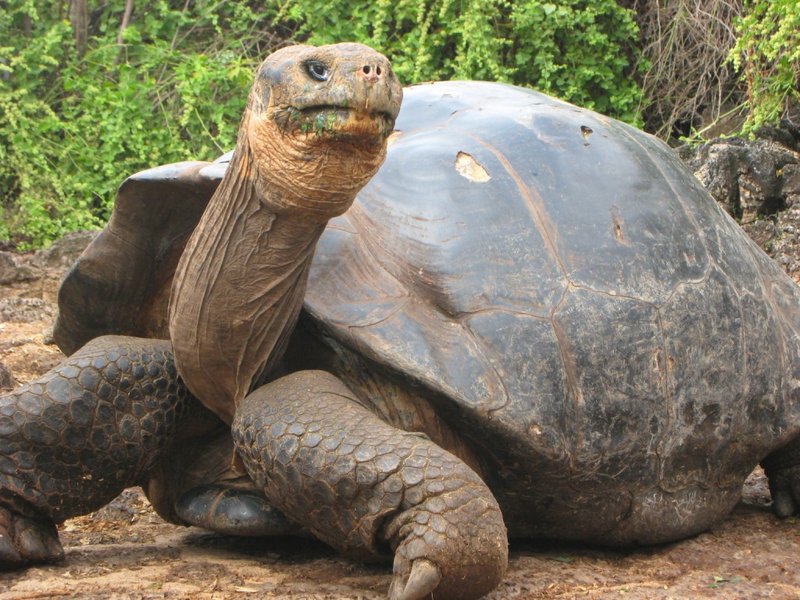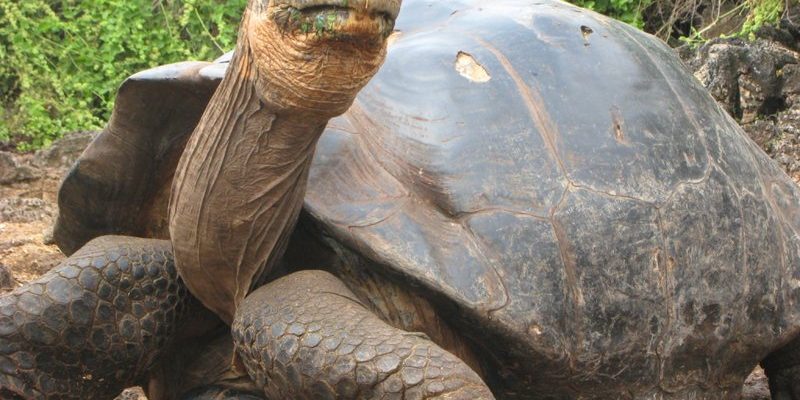
These tortoises, native to the Galápagos Islands, have become symbols of evolution and conservation. They represent a unique chapter in the story of life on Earth, thanks to their long lifespans, immense size, and varied habitats. But, let’s face it: with all the tales swirling around them, it can get tough to separate fact from fiction. So, grab a cup of coffee, and let’s dive into some common myths and facts about these incredible creatures!
Myth 1: Galápagos Tortoises Live for Hundreds of Years
You’ve probably heard that Galápagos tortoises can live for hundreds of years, right? It’s a captivating thought, almost mythic in itself. But here’s the thing: while they do have impressively long lifespans, they don’t usually reach the 200-year mark. Most tortoises live into their 80s or 90s, which is still quite remarkable!
To understand their longevity, it helps to consider their slow metabolism. These tortoises thrive in environments where food can be scarce. Their bodies have learned to adapt, slowing down their growth and energy use. In some cases, this slow and steady approach to life is what keeps them ticking for so long. So, yes, they’re long-lived, but it’s not quite the fantastical century-spanning life some myths suggest.
Myth 2: All Galápagos Tortoises Are the Same
It’s easy to think there’s just one type of Galápagos tortoise, but here’s a fun fact: there are actually several different species! Each species has evolved to adapt to its specific island habitat. For instance, the saddleback tortoise has a unique shell shape, making it easier to reach high foliage, while the domed tortoise has a more rounded shell suited for a diet that involves low-lying plants.
Consider this like how different dog breeds have unique traits suited for their environments. Just as a Greyhound and a Bulldog differ in shape and function, the species of Galápagos tortoises vary in their adaptations. Understanding this diversity helps us appreciate the role each species plays in the ecosystem, making the Galápagos Islands a living laboratory of evolution.
Different Habitats, Different Tortoises
Each species of tortoise has its own distinct habitat preferences. For example, some prefer the lush environments of the highlands, where there’s ample vegetation. In contrast, others are more at home in arid coastal areas. Each species has adapted over time to make the most of its surroundings, demonstrating nature’s incredible ability to shape life.
Myth 3: Galápagos Tortoises Are Lazy
It’s a common stereotype that tortoises are just lazy creatures who take their time in life. Honestly, though, they’re not lazy; they’re simply energy-efficient. Their slow movements are a survival strategy, allowing them to conserve energy in their often harsh environments.
Think about it: if you had to live in an area where resources might not always be plentiful, wouldn’t you want to take it easy too? While they may not sprint around like a rabbit, these tortoises are highly adapted to their lifestyle, moving slowly to maximize their foraging efficiency. So, while they may look like they’re lounging about, they’re really just being smart with their energy usage.
Myth 4: Tortoises Only Eat Plants
Many people assume that Galápagos tortoises are strict herbivores, but this isn’t entirely accurate. While the majority of their diet consists of grasses, leaves, and fruits, they’ve also been known to munch on carrion (dead animals) when the opportunity arises.
Imagine being presented with a buffet of delicious greens but also the occasional slice of something unexpected. The tortoises engage in what’s called opportunistic feeding, meaning they’ll take advantage of whatever nutrients are available. This adaptability helps them thrive in their sometimes tough environments, ensuring they get the nutrition they need to survive.
Feeding Habits Over Time
Due to the varying availability of food on different islands, the tortoise’s diet can change from one season to another. During dry seasons, they might rely more on stored energy and the tougher plants they can find. This flexibility is key to their survival and shows just how resourceful these ancient creatures can be.
Myth 5: Galápagos Tortoises Are Not Endangered
You might think that since these tortoises are so iconic, they’re doing just fine. Sadly, this is not the case. Various species of Galápagos tortoises are classified as endangered, primarily due to habitat loss, introduced species, and human activity.
You know, it’s like having a beautiful park that people continuously trample on. Over time, the flowers struggle to grow back, and that’s exactly what’s happening here. Conservation efforts are crucial to protect these gentle giants and their habitats, making sure they have a fighting chance for generations to come.
Conservation Efforts
Thanks to dedicated individuals and organizations, there are ongoing programs aimed at conserving and breeding Galápagos tortoises. These efforts include breeding programs in captivity and habitat restoration projects. It’s a community effort that demonstrates how collective action can lead to positive change for these iconic animals.
Understanding Their Importance to Biodiversity
Now that we’ve busted some myths, let’s talk about why Galápagos tortoises matter. These tortoises play a vital role in maintaining the ecological balance of their islands. By grazing on vegetation, they help maintain plant diversity and keep certain species from becoming too dominant.
Imagine a garden where everything grows unchecked. Without careful tending, some plants would choke out others, leading to a less diverse ecosystem. Galápagos tortoises provide that necessary balance, ensuring that various plants can coexist and thrive in their natural habitats.
In essence, the health of these tortoises can reflect the overall health of the ecosystem. That’s why their conservation is so important—not just for the tortoises themselves but for the entire environment they inhabit.
The Galápagos tortoise is a remarkable creature, steeped in myth and reality. From their long lifespans to their unique adaptation to various environments, they showcase the wonders of nature and evolution. Yet, as we’ve seen, there are many misconceptions surrounding them.
By understanding the facts—like their diverse species, dietary habits, and the threats they face—we can better appreciate these magnificent reptiles. Most importantly, we can support conservation efforts to protect them for future generations. So, the next time you hear someone say something about Galápagos tortoises, you’ll have the facts to share and maybe even spark a conversation about these amazing animals!

